Historians are really just storytellers. The best historians are those who can find the best stories, without having to resort to embellishment or revisionism after the fact. In the years and decades to come, historians, researchers, scholars and avid students of the Civilian Conservation Corps will eventually turn their attention to more obscure source material, in an effort to recount new and better stories about to the CCC. The realm of CCC history is a wide-open field for research and many are beginning to see that, especially as the 1941-1945 war years become evermore burnt over from a historical research standpoint. Future storytellers may be rewarded with some interesting insights into lesser-known aspects of the CCC and from time to time they may even get a chuckle out of what they find.
For example, in 1935, 1936 and 1937, there came up for discussion a number of Senate reports entitled “Settlement of Individual Claims for Personal Property Lost or Damaged From the Activities of the Civilian Conservation Corps.” These reports are basically a listing of claims made by regular citizens against the government, seeking reimbursement for damages received as the result of CCC activity. Understandably, nearly all of the claims in the 1935-37 period were the result of vehicular mishaps.
.JPG) Each of the incidents is noted to have been investigated by a board of officers who then made their recommendations regarding payment of claims and in some cases, fixing partial blame on the CCC enrollee. In only one case does it appear that full responsibility was placed on the head of the unfortunate CCC enrollee. On November 26, 1933 – perhaps in connection with Thanksgiving festivities that year – an intoxicated CCC enrollee, operating a CCC truck on the streets of Grand Junction, Colorado, “struck and damaged” a legally parked automobile belonging to one Andy McKelvey. “The operator of the truck,” the report states, “was apprehended, tried, found guilty, and confined as a result…” Mr. McKelvey received the princely sum of $65.35 “on account of damages sustained.”
Each of the incidents is noted to have been investigated by a board of officers who then made their recommendations regarding payment of claims and in some cases, fixing partial blame on the CCC enrollee. In only one case does it appear that full responsibility was placed on the head of the unfortunate CCC enrollee. On November 26, 1933 – perhaps in connection with Thanksgiving festivities that year – an intoxicated CCC enrollee, operating a CCC truck on the streets of Grand Junction, Colorado, “struck and damaged” a legally parked automobile belonging to one Andy McKelvey. “The operator of the truck,” the report states, “was apprehended, tried, found guilty, and confined as a result…” Mr. McKelvey received the princely sum of $65.35 “on account of damages sustained.”Bureaucratic red tape is nothing new and in the CCC there existed a strict set of guidelines and particular forms that had to be filled out in the event of an accident involving a CCC enrollee or vehicle. In the Manual of Administration for the Civilian Conservation Corps, written as a how-to guide by Army Lieutenant L.P.D. Warren in 1935, there is printed a sample copy of an investigation report. Lieutenant Warren points out in his text that if the owner of the private vehicle expresses their intention to file a claim against the government for damages, they were required to fill out Quartermaster Corps (QMC) Form #28, five copies of which would accompany the report of the investigating officer, but the Form #28 would not be listed as an attachment to the report. Other forms that were to be included and listed as attachments were the driver’s report of accident Form #26 and the investigating officer’s report Form #27.
Ironically, in Lt. Warren’s manual, there also appears a sample accident report for a mishap involving a CCC truck from a Soil Conservation Corps CCC camp at Athens, Georgia on May 4, 1935. It seems that on that day, government Dodge truck #32341, driven by Enrollee “X” (I’ll protect his name. He might be a member of a CCC veteran in your home town.) collided with a vehicle owned and driven by Mr. Ramey Epps of Athens, Georgia. Although the truck was listed as being on “official business” from Camp SCS-1, it was determined that Enrollee “X” was under the influence of intoxicants and he was found fully responsible for the accident. As a result, Enrollee “X” was required to pay $4.00 to cover the cost of repairing the government vehicle. The investigating officer’s recommendation that Enrollee “X” also pay $13. 35 to cover repairs to the privately owned vehicle was overturned by the District Headquarters.
Most of the incidents cited in the Senate reports don’t include things as salacious as drunken CCC enrollees cruising the streets of America’s cities looking for things to bang into, in fact most of the accidents are chalked up to bad road conditions and a condition generally referred to as a “mechanical defect.” For example a vehicle belonging to a Frank W. Brunner of Springfield, Illinois was damaged to the tune of $38.55, “when, due to a mechanical defect in the front wheels” the operator of a CCC truck struck and damaged Mr. Brunner’s car. In another incident involving a CCC truck outside Minersville, California, “the clevise (sic) pin sheared off,” leaving the CCC vehicle out of control, at which point it collided with a privately owned automobile causing $49.10 in damages. “Mechanical defect” was also along for the ride when Miss Lucy Ahrens’ vehicle was damaged due to a collision with a CCC vehicle in Tacoma, Washington on May 14, 1935.
Not all mishaps involving the CCC and damage to vehicles were the result of drunkenness, mechanical defect or treacherous road conditions. On April 14, 1935, Mrs. Clara B. Chapman was proceeding east on State Highway Number 103 in Van Buren, Missouri. Mrs. Chapman passed Big Spring Park as a group of CCC enrollees were engaged in baseball batting practice – as part of the authorized athletic program of Company 1740, the report is careful to point out. A foul ball struck Mrs. Chapman’s car “damaging it to the extent of $15.10.” One has to wonder how a foul ball can cause $15.10 worth of damage while other claims involving the collision of trucks with private vehicles occasionally resulted in claims as low as $7.90.
Finally, there is the Senate report involving a claim filed by H. C. Ledford of Randle, Washington. Here it seems fitting to quote the entry as it appears in the report:
“On May 4, 1935, the operator of a Civilian Conservation Corps truck, while proceeding in a westerly direction on Lower Cispus Road, near Randle, Wash., at approximately 25 miles an hour, attempted to stop after being hailed by boys who were driving a herd of cattle. Upon applying the brakes the pin sheared off, causing the operator to lose control of his vehicle, which collided with two cows, property of the claimant, damaging one of them to the extent of $20.”
How would one determine if a cow had been “damaged,” exactly? Furthermore, with the price of meat what it is today, I wonder if it’s still possible to only do $20 worth of “damage” to a cow.
So, what’s the lesson in all this? Storytellers – historians – aren’t always interested in portraying the entire story if one piece of it will suit their needs. For example, it’s become fashionable among scholars and academics to argue that Pearl Harbor was somehow the United States’ fault and that Hiroshima was simply an act of barbarism perpetrated on an already beaten Japanese nation. Do you think that our CCC history will be immune from such slanders in the years to come?
Taken as a whole, the Senate reports on payment of claims due to accidents involving the CCC are a useful insight into the workings of our government and they offer a glimpse of how things were handled in the camps. Picked apart and taken selectively, the reports might be construed to show that CCC enrollees were a bunch of boozing truckers, rumbling around the nation in vehicles rife with “mechanical defects” and thus not fit to drive.
The story of the CCC is your story but it will only serve for good if you tell the story. When grandchildren, nieces and nephews, sons and daughters ask you to tell of your time in the CCC, they’re asking because they want to know and that’s reason enough to tell the story. However there will be a bigger purpose to the telling in years to come when those memories take the form of oral histories and personal narratives that historians use to recount the story of Roosevelt’s Conservation Corps. Sure, tell the whole story, warts and all, and good historians - storytellers who are faithful to the trade - will accurately recount what you accomplished in a worldwide economic depression and a World War, while perhaps adding that no CCC enrollee was perfect.
Copyright 2007, Michael Smith (This article appeared in a slightly modified format in the NACCCA Journal.)
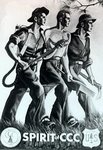
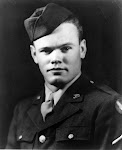





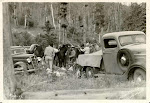
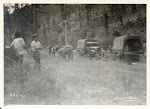
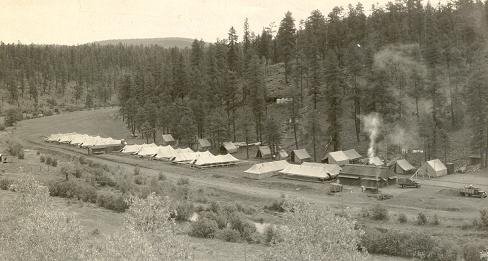


No comments:
Post a Comment